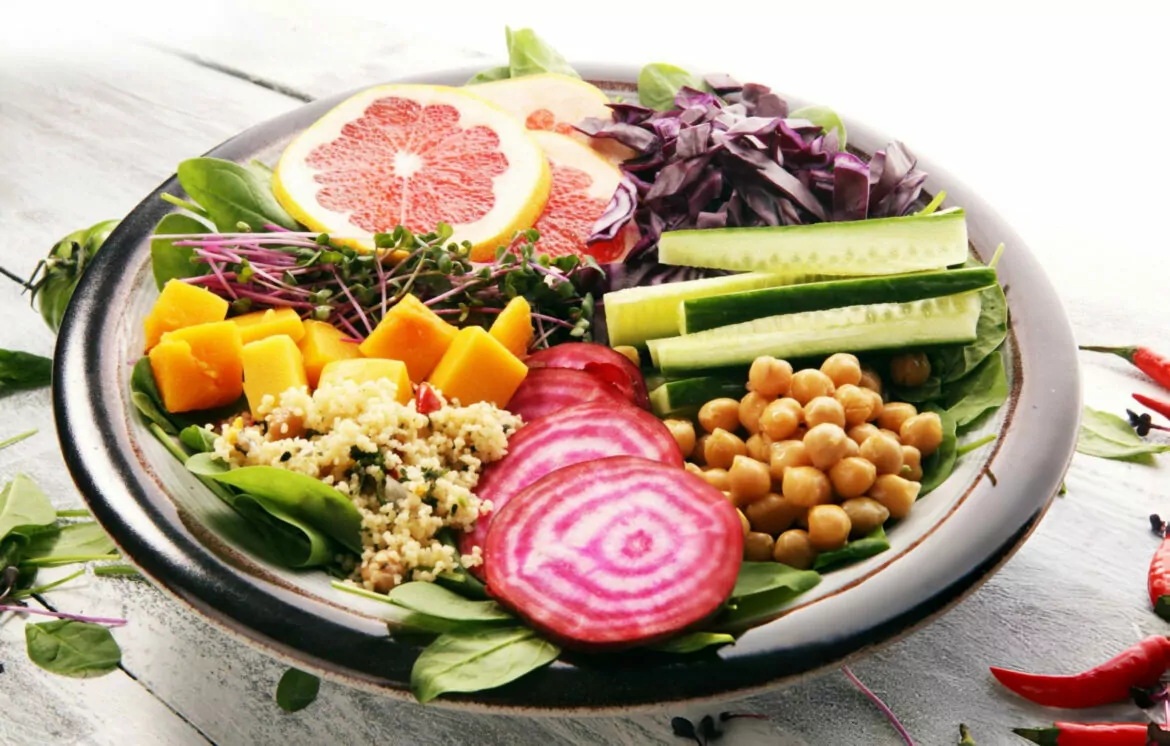Buddha bowls have taken the culinary world by storm, offering a vibrant and balanced meal in a single bowl. Packed with a variety of colors, textures, and flavors, these bowls are as pleasing to the eyes as they are to the taste buds. Whether you’re seeking a nourishing lunch or a fulfilling dinner, a Buddha bowl delivers a wholesome, satisfying experience.
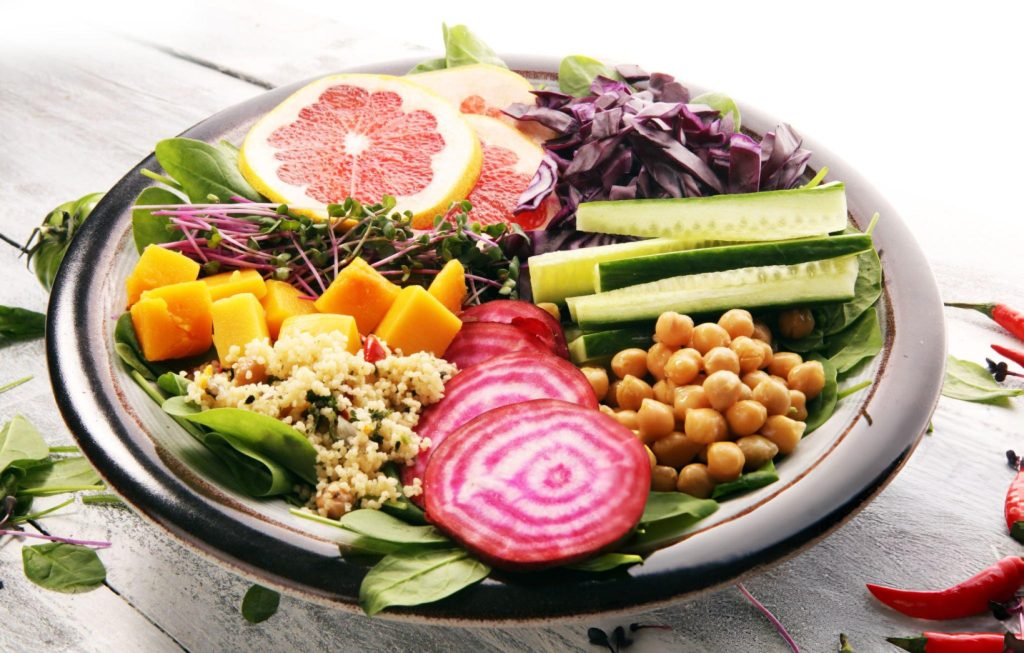
What Are Buddha Bowls?
Buddha bowls are a medley of nutrient-dense ingredients, thoughtfully arranged in a bowl. Each component brings its unique flavor and texture, creating a harmonious blend. Typically, they include a grain base, a variety of vegetables (both raw and cooked), a protein source, and flavorful toppings, all brought together with a delicious dressing. The concept is rooted in balance, aiming to provide a mix of carbohydrates, proteins, fats, and fiber in every serving.
The Benefits of Eating a Buddha Bowl
Eating a Buddha bowl is not just about enjoying a tasty meal; it’s also about nourishing your body with wholesome ingredients. These bowls are versatile, allowing for endless combinations of grains, vegetables, and proteins, ensuring you get a variety of nutrients. They’re also incredibly customizable, catering to different dietary preferences and needs, whether you’re vegetarian, vegan, or gluten-free. Plus, the emphasis on fresh, whole foods means you’re getting plenty of vitamins, minerals, and antioxidants with every bite.
Ingredients Overview
The beauty of a Buddha bowl lies in its simplicity and adaptability. The ingredients are easy to source and prepare, yet they come together to create a meal that’s both satisfying and visually stunning.
A Closer Look at the Key Ingredients
Sweet Potatoes: The Star of the Bowl
Sweet potatoes add a comforting sweetness and vibrant orange hue to the bowl. Roasting them brings out their natural sugars, creating caramelized edges that contrast beautifully with the other fresh ingredients.
The Power of Leafy Greens: Kale and Cabbage
Kale and red cabbage offer a mix of textures, from the tender, massaged kale to the crisp, shredded cabbage. Both are packed with nutrients, providing a solid base of vitamins A, C, and K, along with fiber to keep you full and satisfied.
Protein Choices: Chickpeas or Lentils?
Whether you choose chickpeas or lentils, you’re adding a hearty dose of plant-based protein. Chickpeas bring a creamy texture and mild flavor, while lentils offer a slightly earthier taste. Both options complement the other ingredients well and contribute to the bowl’s overall nutritional profile.
Adding a Crunch: Radishes, Carrots, and Sauerkraut
Thinly sliced radishes and carrot ribbons provide a refreshing crunch, while sauerkraut adds a tangy, fermented twist. These elements not only enhance the texture but also introduce probiotics, supporting gut health.
Step-by-Step Preparation
Preparing a Buddha bowl is an art form, where each step builds on the previous one to create a final dish that’s greater than the sum of its parts.
Preparing the Sweet Potatoes: Roasting to Perfection
Roasting the sweet potatoes is the first step. Toss the cubes in extra-virgin olive oil, sea salt, and freshly ground black pepper, then spread them evenly on a baking sheet. Roasting at 400°F brings out their natural sweetness, resulting in tender, caramelized pieces that are the perfect foundation for your Buddha bowl.
Creating the Fresh Veggie Mix: Slicing and Seasoning
While the sweet potatoes are roasting, you can prepare the fresh vegetables. Use a mandoline to slice the radishes into delicate rounds, and a vegetable peeler to create carrot ribbons. Toss these with shredded red cabbage and a squeeze of fresh lemon juice, enhancing their crispness and flavor.
Massaging Kale for Maximum Flavor
Next, turn your attention to the kale. Massaging the leaves with lemon juice and a pinch of salt helps to break down the tough fibers, making the kale more tender and flavorful. This process also helps to reduce the kale’s bitterness, allowing its natural sweetness to shine through.
Assembling Your Buddha Bowl: Layering and Topping
With all the components prepared, it’s time to assemble your bowl. Start with a base of cooked brown rice or quinoa, then layer on the massaged kale, roasted sweet potatoes, and fresh veggie mix. Add a portion of chickpeas or lentils, followed by a scoop of sauerkraut. Sprinkle with sesame seeds or hemp seeds for a nutty crunch, and finish with a handful of microgreens if desired. Serve with a side of Turmeric Tahini Sauce, drizzling it generously over the top.
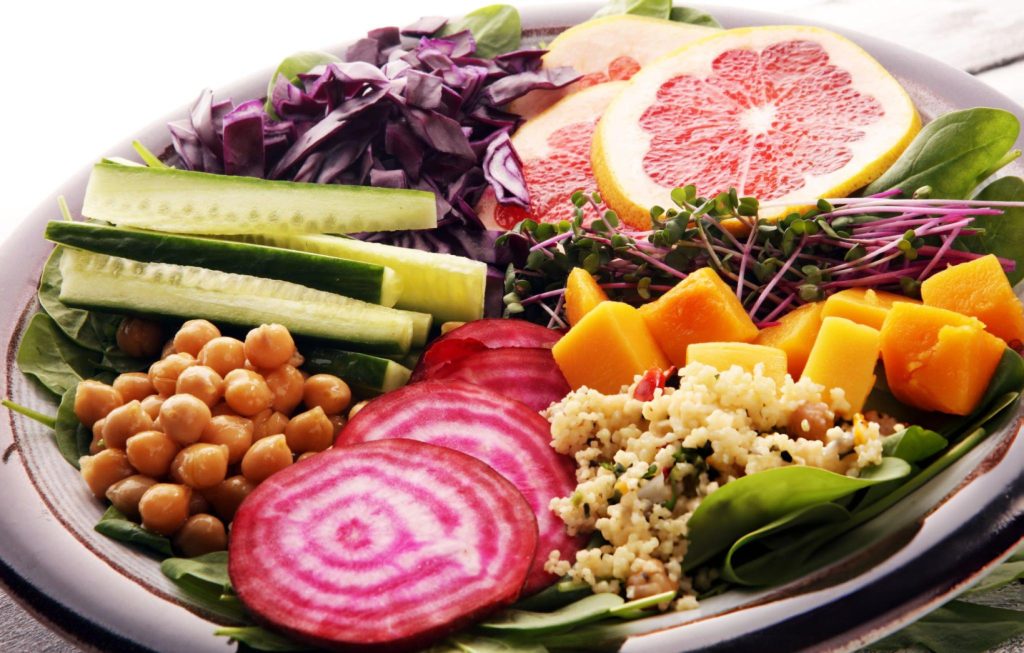
Recipe Tips & Frequently Asked Questions
Choosing the Best Grains: Brown Rice vs. Quinoa
Both brown rice and quinoa offer unique benefits. Brown rice is hearty and filling, with a chewy texture that pairs well with the tender vegetables. Quinoa, on the other hand, is light and fluffy, with a subtle nutty flavor and the added bonus of being a complete protein.
Variations: Adding Extra Veggies or Proteins
Feel free to mix things up by adding roasted cauliflower, steamed broccoli, or sautéed mushrooms. For a protein boost, consider topping your bowl with tofu, tempeh, or even a poached egg.
Perfecting the Turmeric Tahini Sauce
The Turmeric Tahini Sauce is what ties all the flavors together. To get the right consistency, start by mixing tahini with lemon juice, garlic, turmeric, and a splash of water. Adjust the thickness by adding more water or tahini until it reaches your desired pourability.
How to Store Leftovers and Make-Ahead Tips
Buddha bowls are perfect for meal prep. Store the ingredients separately in airtight containers in the refrigerator, then assemble your bowl just before serving. The roasted sweet potatoes and cooked grains will last for up to four days, while the fresh vegetables should be consumed within two to three days for optimal freshness.
Can I Use Different Vegetables in My Buddha Bowl?
Absolutely! Buddha bowls are highly versatile. Swap out the radishes for cucumbers, the sweet potatoes for butternut squash, or the kale for spinach. The key is to mix and match flavors and textures to suit your palate.
What Is the Best Way to Store Leftover Buddha Bowls?
Store the components separately in airtight containers to keep everything fresh. This also prevents the veggies from becoming soggy. Reheat the sweet potatoes and grains before assembling the bowl for the best texture.
How Can I Make This Recipe Gluten-Free?
This recipe is naturally gluten-free as long as you choose certified gluten-free grains like quinoa or brown rice. Be sure to check the labels on any store-bought sauces or fermented vegetables as well.
Can I Add Meat or Fish to This Recipe?
While Buddha bowls are traditionally plant-based, you can easily add animal protein if you prefer. Grilled chicken, seared salmon, or even shrimp would pair wonderfully with the other ingredients.
Customizing Your Buddha Bowl
Buddha bowls are all about personalization. With so many options available, you can tailor the ingredients to suit your dietary preferences or simply to match your mood.
Vegetarian and Vegan-Friendly Options abound with Buddha bowls. The base of grains and vegetables ensures a hearty meal, while chickpeas, lentils, or tofu provide satisfying protein. If you’re vegan, opt for dairy-free toppings and sauces.
For those seeking a protein boost, consider adding grilled tofu, tempeh, or even seitan. These plant-based proteins are rich in flavor and texture, making your Buddha bowl even more filling. If you prefer animal protein, lean meats like grilled chicken or fish can be a delicious addition.
Making It Kid-Friendly is easy with Buddha bowls. Simplify the ingredients by using familiar vegetables and grains, and consider offering a variety of toppings so kids can build their own bowls. This interactive element can make mealtime more enjoyable and encourages kids to try new foods.
Buddha bowls are more than just a meal; they are a canvas for culinary creativity. With endless combinations of grains, proteins, and vegetables, they offer a fresh and nutritious option that can be tailored to any taste. Whether you’re looking to add more plant-based meals to your diet or simply want to enjoy a vibrant, wholesome dish, Buddha bowls are a perfect choice. So, why not make them a part of your weekly menu and start experimenting with new flavors and textures today?
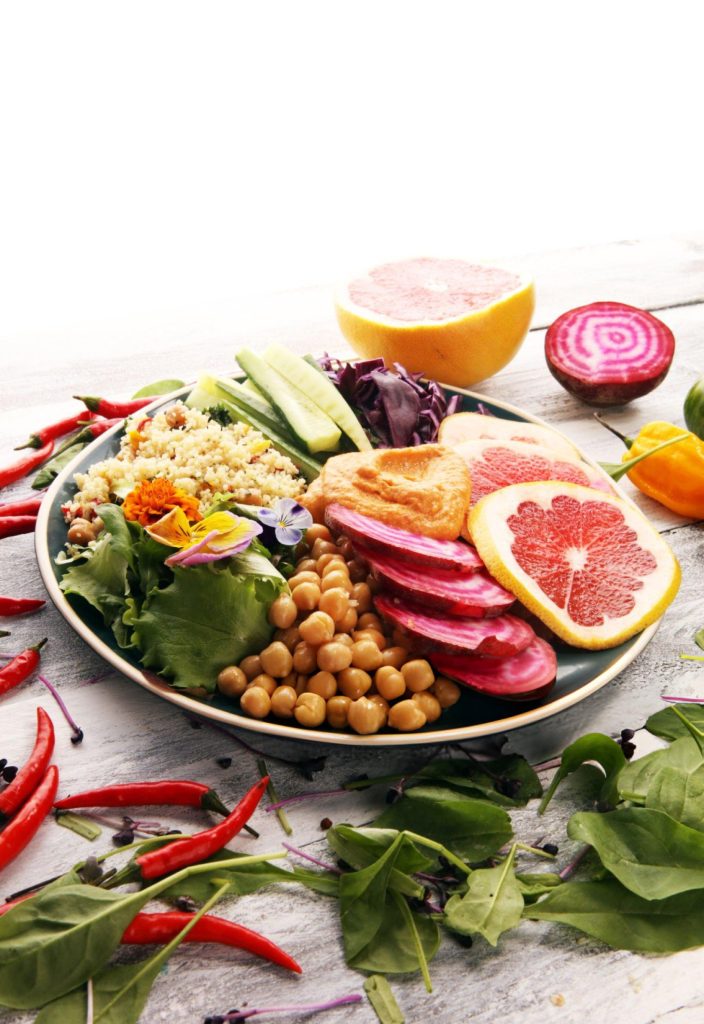
Ingredients
2 cups cooked brown rice or quinoa
1 cup cooked chickpeas or lentils
1 large sweet potato, cut into cubes
Extra-virgin olive oil, for drizzling
Sea salt and freshly ground black pepper
8 kale leaves, roughly chopped
2 medium carrots, peeled into ribbons
¾ cup sauerkraut or any fermented vegetable
1 watermelon radish or 2 red radishes, thinly sliced
1 cup shredded red cabbage
2 tablespoons sesame seeds or hemp seeds
Lemon wedge, for squeezing
Turmeric Tahini Sauce, for serving
Microgreens, optional
Instructions
Preheat your oven to 400°F and line a large baking sheet with parchment paper. Toss the cubed sweet potato with a drizzle of olive oil, a sprinkle of sea salt, and freshly ground black pepper. Spread them evenly on the prepared baking sheet and roast for about 20 minutes, or until they turn golden and tender.
Meanwhile, use a mandoline to thinly slice the radishes into delicate rounds, and peel the carrots into long ribbons using a vegetable peeler. Combine the radish slices, carrot ribbons, and shredded red cabbage in a bowl, and toss them with a generous squeeze of fresh lemon juice. Set this vibrant mixture aside.
In a separate large bowl, place the chopped kale leaves. Squeeze a bit of lemon juice over the kale, add a pinch of salt, and massage the leaves with your hands. Continue until the kale softens, wilts, and reduces in volume by about half.
To assemble the bowls, start with a base of cooked brown rice or quinoa, followed by a portion of chickpeas or lentils. Add a handful of the massaged kale, a serving of the lemony radish, carrot, and cabbage mixture, and a generous scoop of the roasted sweet potatoes. Top it off with a spoonful of sauerkraut, a sprinkle of sesame seeds or hemp seeds, and some microgreens if desired. Finally, season with additional salt and pepper to taste, and serve with a side of Turmeric Tahini Sauce for drizzling over the top.
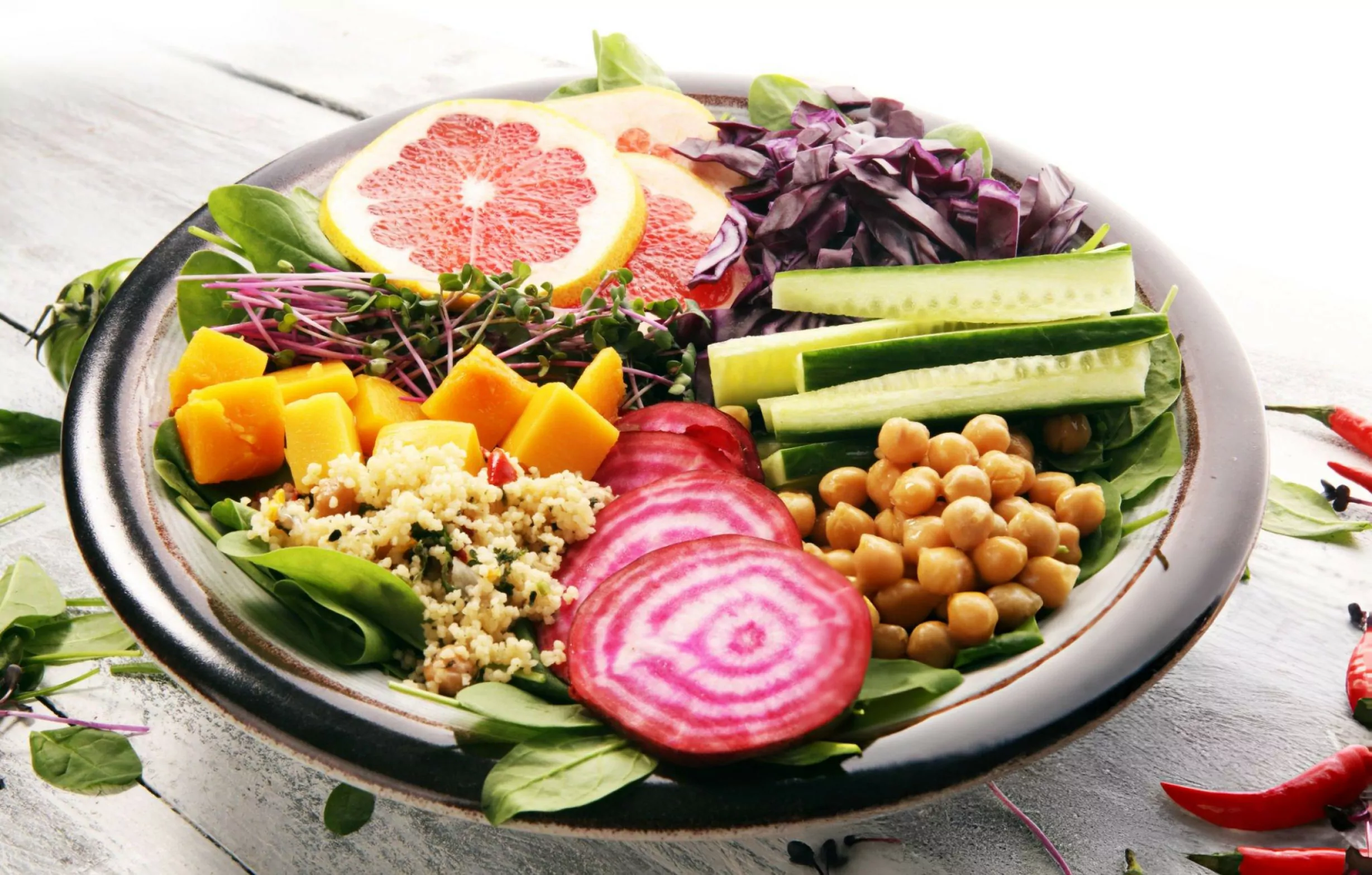
Buddha Bowls Recipe
Ingredients
- 2 cups cooked brown rice or quinoa
- 1 cup cooked chickpeas or lentils
- 1 large sweet potato cut into cubes
- Extra-virgin olive oil for drizzling
- Sea salt and freshly ground black pepper
- 8 kale leaves roughly chopped
- 2 medium carrots peeled into ribbons
- ¾ cup sauerkraut or any fermented vegetable
- 1 watermelon radish or 2 red radishes thinly sliced
- 1 cup shredded red cabbage
- 2 tablespoons sesame seeds or hemp seeds
- Lemon wedge for squeezing
- Turmeric Tahini Sauce for serving
- Microgreens optional
Instructions
- Preheat your oven to 400°F and line a large baking sheet with parchment paper. Toss the cubed sweet potato with a drizzle of olive oil, a sprinkle of sea salt, and freshly ground black pepper. Spread them evenly on the prepared baking sheet and roast for about 20 minutes, or until they turn golden and tender.
- Meanwhile, use a mandoline to thinly slice the radishes into delicate rounds, and peel the carrots into long ribbons using a vegetable peeler. Combine the radish slices, carrot ribbons, and shredded red cabbage in a bowl, and toss them with a generous squeeze of fresh lemon juice. Set this vibrant mixture aside.
- In a separate large bowl, place the chopped kale leaves. Squeeze a bit of lemon juice over the kale, add a pinch of salt, and massage the leaves with your hands. Continue until the kale softens, wilts, and reduces in volume by about half.
- To assemble the bowls, start with a base of cooked brown rice or quinoa, followed by a portion of chickpeas or lentils. Add a handful of the massaged kale, a serving of the lemony radish, carrot, and cabbage mixture, and a generous scoop of the roasted sweet potatoes. Top it off with a spoonful of sauerkraut, a sprinkle of sesame seeds or hemp seeds, and some microgreens if desired. Finally, season with additional salt and pepper to taste, and serve with a side of Turmeric Tahini Sauce for drizzling over the top.

